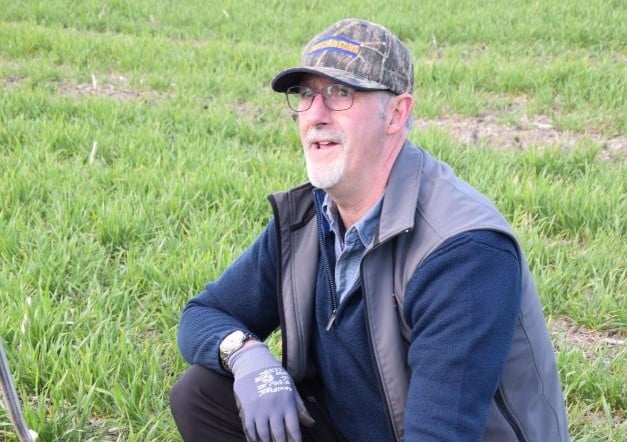Soil mineral N fares better in well managed soils – Farmers Guardian – Dick Neale
Differences in soil management are likely to account for N-min testing results that have either been not as low as expected or extremely low, following a wet winter ...
“Where a more conservation agriculture approach has been taken, such as minimal soil disturbance, direct drilling, return of residues and building of N using cover crops, N has not been as low as we thought it might be. It is around 60kg, 80kg, 100kg N/ha. Soils managed sympathetically have retained far more nutrients than we would have expected in the wet winter we’ve just had.”
However, in some soils N has been down to 30kg/ha, says Mr Neale. “Where soils have been heavily cultivated there has been rapid water movement through the soil and as the water rushes through it takes available nutrients with it.”

Dick Neale, Hutchinsons technical manager
With good management of soil structure, water flows through at a much slower rate and is absorbed and stored for summer growth, says Mr Neale. “Because water is moving more slowly it is not washing nutrients down through the soil profile. They are maintained in the soil and leaching is not occurring.”
Early drilled crops
Looking ahead to fertiliser regimes, earlier drilled crops should be prioritised, he suggests. “Some may have drilled winter wheat in September with other crops not sown until November. There is a tendency to put more nitrogen on a backward than forward crop but if in forward crops the soil N is only 30kg/ha those crops need feeding to grow away.”
CF Fertilisers’ head of agronomy Dr Sajjad Awan says soil nitrogen supply (SNS) indices are likely to be low this spring following the unusual combination of high rainfall and low temperatures.
“In most years high winter rainfall is usually associated with milder conditions, but this hasn’t been the case this year.
“With the exception of the odd day, temperatures between the last third of December and the end of January were well below average and this was compounded by the freezing conditions experienced across most parts of the country in early February.
“At the same time, the AHDB’s excess winter rainfall (EWR) data shows that over 90 per cent of the country had high or very high excess winter rainfall compared to the long term average.
“The implication of these factors combined is that crops have not been able to take up the nitrogen to the same extent they normally would have and have grown slowly during winter compared to an average year.
“Due to a lack of crop uptake, this nitrogen will have moved further down the soil profile or leached away, especially in lighter and shallower soils and be less available for plant uptake as a result.”
In such circumstances, it is crucial to measure soil mineral nitrogen (SMN). However, SMN alone is unlikely to give growers an accurate enough picture on which to base fertiliser applications, he says.
“Soil nitrogen supply (SNS) is what really matters, and this can only be assessed accurately if additionally available nitrogen (AAN) – the nitrogen likely to become available to the crop through mineralisation as the season progresses – is known.”
A CF-N-Min test, including the AAN estimate, will help build up an accurate picture of what soil nitrogen will contribute to overall nutrient management, adds Dr Awan.
Yara agronomy manager Mark Tucker says it is ‘fairly predictable’ that soil nitrogen will be low and crop nitrogen higher after the reasonable establishment.
“High rainfall, and waterlogged soils give low N status. Yara’s advice therefore has been to go as soon as conditions allow and coincide with the start of spring growth at minimum soil temperatures of 5degC. Use N in conjunction with fresh phosphate, which can be foliar, to repair and rebuild damaged root systems.”